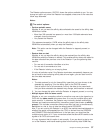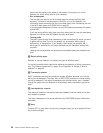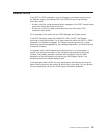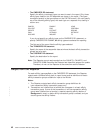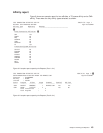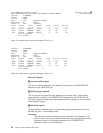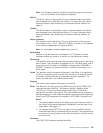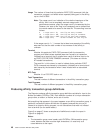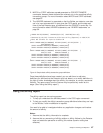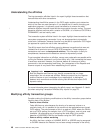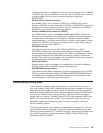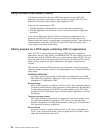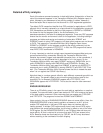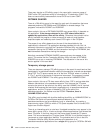Note: The Trangroup value for an affinity transaction group may vary from
one run to another of the Detector or Reporter.
Affinity
The affinity relation. If appropriate, this also indicates whether the relation
was worsened from a less restrictive relation. For more information about
worsened relations, see “Worsening of transaction affinities relations” on
page 14.
Lifetime
The affinity lifetime. If appropriate, this also indicates whether the lifetime
was worsened from a less restrictive lifetime. For more information about
worsened lifetimes, see “Worsening of transaction affinities lifetimes” on
page 14.
Queue (resource)
The resource causing the affinity. This may be the name of the resource
(for example, Queue : LOCA1 (D3D6C3C1F1404040) as shown) or the address
of the resource, depending on the type of affinity.
Note: An unprintable character appears as a period (.).
Recoverable
Whether or not the resource is recoverable. For TS queues, this also
indicates whether the queue is in auxiliary or main temporary storage.
Terminal Id
The identifier of the terminal where the transactions taking part in the affinity
were initiated. This information is available only for TS queue affinity, and is
meaningful only if the affinity is LUNAME or worsened from LUNAME to
GLOBAL. Therefore, the terminal identifier is included in the report only in
these cases.
Tranid The identifier of each transaction taking part in the affinity. It is possible for
an affinity transaction group to contain only one tranid. An example of such
a situation is where each part of a pseudoconversation accesses a TS
queue, and each part runs under the same tranid.
Program
The name of each program taking part in the affinity.
Offset The offset from the load point of the BALR instruction at the EXEC CICS
command causing the affinity. The Reporter outputs a negative offset
(X'FFFFxxxx') if it could not determine an offset; that is, if the offset
calculated is not within the program. This may indicate that the program (or
perhaps language run-time code) has passed control to another program by
using a non-CICS mechanism (for example, a VS COBOL II dynamic call).
Notes:
1. This offset is not the same as the offset given by the Scanner, which is
the offset of the command argument 0 declaration from the start of the
load module. (See page 71.)
2. If a negative offset (X'FFFFxxxx') is used, it is not possible to directly
locate individual affinity commands within a program. The program must
be scanned for every instance of the affinity command, as there may be
more than one.
Command
The EXEC CICS command causing the affinity.
Chapter 6. Running the Reporter 45



